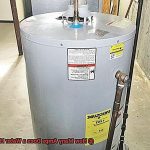Are you tired of feeling the sting of high energy bills every month? Are you ready to take action and do your part in reducing your carbon footprint on the planet? If so, then look no further. In this blog post, I’ll be sharing some fascinating insights on how you can power your home with clean energy in a way that is both affordable and accessible.
By switching to clean energy sources, you can reap a range of benefits such as reduced electricity bills, environmental sustainability, and increased energy independence. Thanks to advancements in technology and government incentives, clean energy is more affordable than ever before.
One option for powering your home with clean energy is installing solar panels or wind turbines. These renewable sources provide a sustainable and endless supply of energy without harming the environment. Alternatively, you could consider using geothermal heating and cooling systems or biomass boilers to further reduce your carbon footprint.
But it’s not just about big investments – small changes in daily habits can also make a significant impact. For example, turning off lights and appliances when not in use or upgrading to energy-efficient appliances can reduce your overall consumption. Conducting a home energy audit can also help identify areas where improvements can be made.
With these exciting developments and simple lifestyle changes, you too can make an impact on your energy consumption and the planet. So why wait? Let’s explore how you can power your home with clean energy.
What is Clean Energy?
Contents
Clean energy is a game-changer in the world of energy production. It refers to sources of energy that generate minimal or zero emissions and do not harm the environment, making it a sustainable and renewable alternative to traditional sources of energy like coal, oil, and gas. Clean energy sources such as solar, wind, hydro, tidal, and geothermal power don’t produce greenhouse gases or contribute to climate change, making them a responsible choice for both individuals and countries.
One of the most popular forms of clean energy is solar power. It harnesses the power of the sun through solar panels that convert sunlight into electricity. Wind power is another form of clean energy that uses wind turbines to generate electricity. Hydroelectric power uses dams or other structures to harness the power of moving water to generate electricity. Tidal power is similar to hydroelectric power but uses the tides instead of flowing water. Geothermal power harnesses the heat from the earth’s core to produce electricity.
When it comes to powering your home with clean energy, there are several factors to consider such as location, climate, budget, and energy needs. But regardless of which clean energy option is best for you, choosing clean energy helps reduce your carbon footprint while also saving you money on your electricity bills.
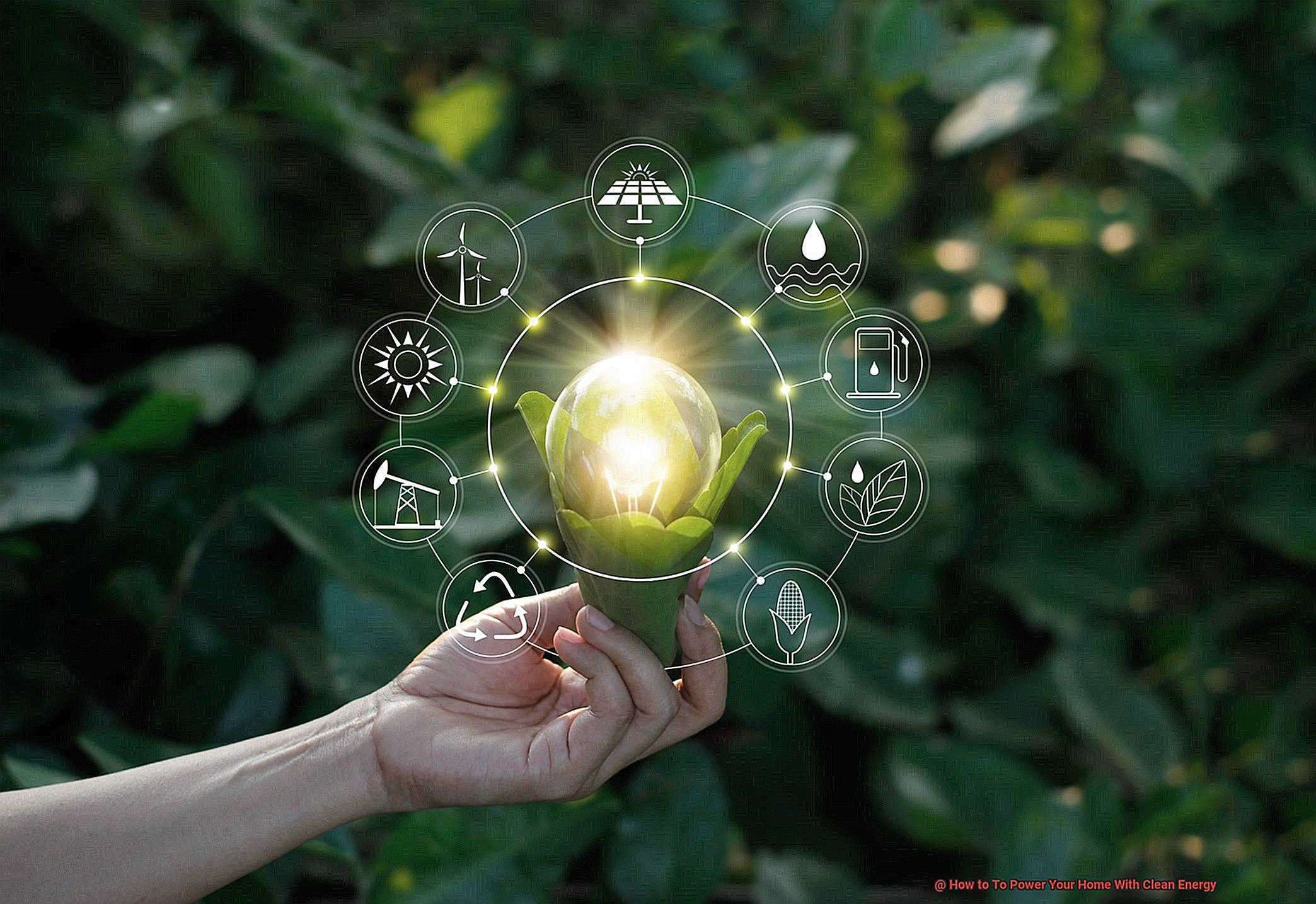
Clean energy sources are becoming increasingly popular due to their environmental benefits and affordability. Many countries are investing in clean energy technologies and infrastructure to reduce their reliance on fossil fuels and combat climate change. In addition, individuals can also adopt clean energy practices at home by installing solar panels, using energy-efficient appliances, and reducing their overall energy consumption.
The future of our planet depends on us making responsible choices when it comes to our energy consumption. Clean energy is a responsible choice that not only helps protect our environment but also saves us money in the long run. So why not join the growing number of people who are adopting clean energy practices?
Benefits of Powering Your Home With Clean Energy
Say goodbye to coal and oil and switch to clean energy sources like solar panels and wind turbines. As an expert in the field, I’m here to tell you about the benefits of powering your home with clean energy sources.
One of the most significant advantages of using clean energy is a lower carbon footprint. Traditional electricity sources release harmful emissions into the atmosphere, contributing to climate change and air pollution. In contrast, clean energy sources like solar and wind power generate electricity without producing any emissions. By using clean energy, you contribute to a cleaner and healthier planet.
Not only does clean energy benefit the environment, but it can also save you money in the long run. Although there can be some upfront costs associated with installing clean energy systems like solar panels, these systems can provide a steady stream of electricity without the need for ongoing fuel costs. This means lower electricity bills and greater financial stability for you.
Generating your own clean energy at home also provides greater independence and control over your energy usage and bills. No more worrying about power outages or fluctuating electricity prices – you become self-sufficient and can enjoy peace of mind knowing that you have control over your energy supply.
Clean energy sources also increase property value. Homes with solar panels or other clean energy systems have been shown to have higher property values than those without. This makes them more attractive to potential buyers if you decide to sell your home in the future.
Furthermore, using clean energy sources contributes to job creation and economic growth. The growth of clean energy industries creates new job opportunities in areas such as manufacturing, installation, and maintenance.
Powering your home with clean energy sources has numerous benefits, from reducing your carbon footprint to saving money and gaining greater control over your energy usage. Make the switch today and join the clean energy revolution.
Solar Power
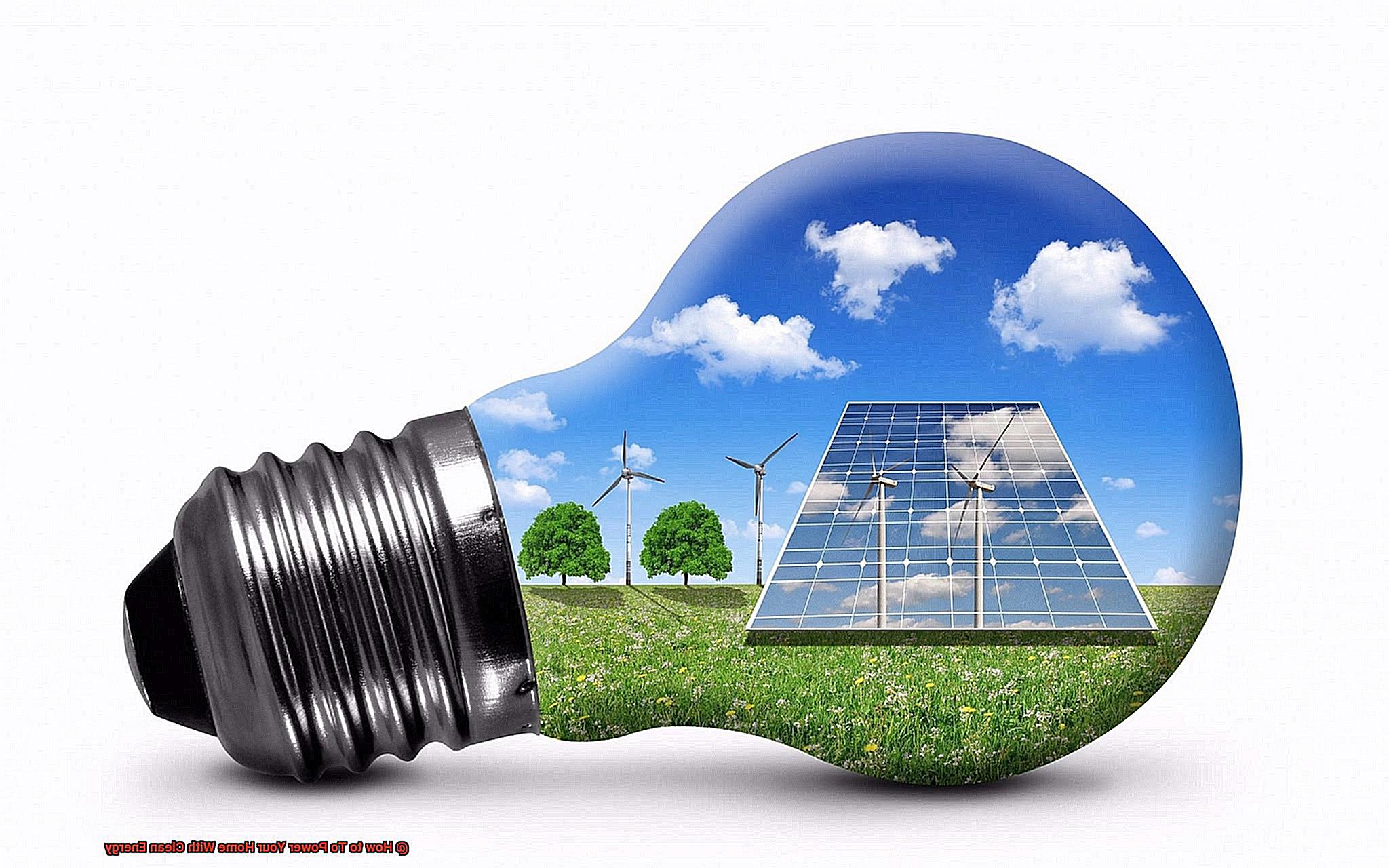
Consider switching to solar power. Not only is it a clean and renewable energy source, but it can also save you money in the long run.
Solar power involves the use of photovoltaic cells to convert sunlight into electricity. These cells are typically housed within solar panels that can be installed on the roof of a home or in an open area that receives direct sunlight. When considering solar panel installation, it’s important to take into account factors such as the amount of sunlight your home receives, the size of your roof, and the number of panels you will need to generate sufficient electricity.
One key advantage of solar power is its environmental friendliness. Unlike traditional energy sources, solar power doesn’t produce any emissions or pollutants, making it an ideal option for those who want to reduce their carbon footprint. And beyond its eco-friendliness, solar power can also help homeowners save money on their electricity bills in the long term.
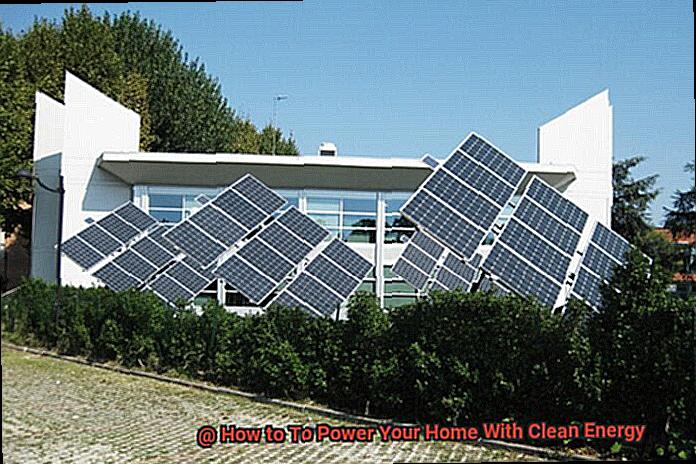
But that’s not all – using solar power also gives homeowners greater control over their energy usage. You can monitor how much energy your system is producing and adjust your usage accordingly. And if you generate more energy than you need, you can even sell it back to the grid.
Of course, there are some considerations to keep in mind when switching to solar power. The upfront cost of installation may seem daunting, but many governments offer incentives or tax credits for homeowners who install solar panels. And while solar panels require very little maintenance, they do need to be cleaned periodically to ensure maximum efficiency.
Overall, if you’re looking for a reliable and sustainable source of energy for your home, solar power is definitely worth considering. Say goodbye to dirty energy sources and join the clean energy revolution today.
Wind Power
Harnessing the power of the wind with a wind turbine is a great way to do just that. Wind power is renewable, abundant, and widely available, making it an excellent option for powering your home with clean energy.
To determine if your location is suitable for wind power generation, it’s important to conduct a site survey. Wind speed is the most critical factor in determining the amount of electricity that can be generated by a wind turbine. On average, areas with wind speeds of at least 12 miles per hour are ideal for wind power generation.
Once you’ve confirmed your location is suitable for wind power generation, you can choose between two main types of wind turbines: horizontal-axis turbines and vertical-axis turbines. Horizontal-axis turbines are the most commonly used type, and they have blades that rotate around a horizontal axis. Vertical-axis turbines, on the other hand, have blades that rotate around a vertical axis.
Determining the right size of wind turbine for your home depends on your energy needs and the available wind resources in your area. From small turbines that generate enough electricity to power one home to larger turbines that can generate enough electricity for multiple homes or businesses, there’s a wind turbine that’s perfect for you.
While installing a wind turbine can be an expensive investment, there are financial incentives available to help offset the cost. The federal government offers a tax credit for up to 30% of the cost of installing a wind turbine. Additionally, many states offer additional incentives such as rebates or grants.
Generating your own electricity with wind power is an excellent way to reduce your reliance on fossil fuels and reduce your environmental impact. By taking advantage of the power of the wind, you can switch to clean energy today and reap long-term benefits.
Geothermal Power
Imagine drilling deep into the earth’s surface to tap into hot water and steam that is naturally produced by the earth’s core. This heat is then used to power turbines, producing electricity that can be used to power homes and businesses. It’s like tapping into the earth’s own energy reserves.
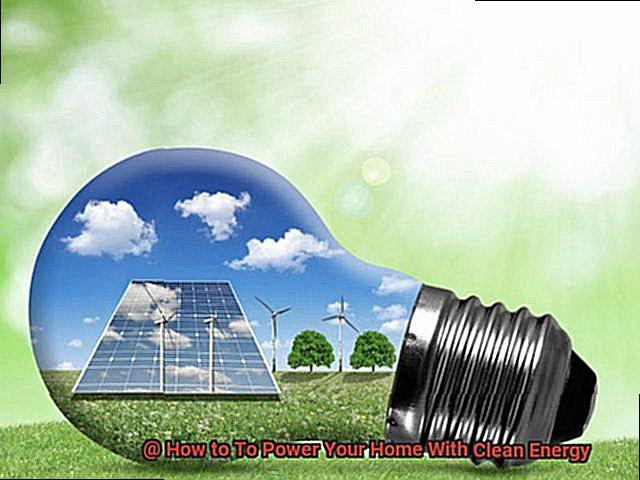
Geothermal power has many advantages over other renewable energy sources. For one, it is a consistent and reliable source of energy as it is not dependent on weather conditions like solar or wind power. This means that geothermal power plants can operate 24/7, providing a steady supply of electricity. Plus, it doesn’t produce any greenhouse gas emissions – making it a clean energy source that helps protect our planet.
Another benefit of geothermal power is that it takes up less land than wind or solar farms, making it ideal for urban areas where space is limited. This also means that geothermal power plants have a small environmental footprint compared to other renewable energy sources. With less land needed, we can preserve more of our natural habitats.
However, there are some challenges associated with geothermal power. Building a geothermal power plant can be expensive as it requires drilling deep into the earth’s surface. Plus, there are potential risks associated with drilling such as earthquakes and other geological disturbances.
Despite these challenges, we believe that geothermal power has the potential to play a vital role in powering our homes and businesses with clean energy. As technology advances and costs come down, we may see more geothermal power plants being built in the future.
With this sustainable energy source, we can reduce our reliance on fossil fuels and move closer towards a greener future.
Hydroelectric Power
Look no further than hydroelectric power. This fascinating energy source has been used for centuries, with modern hydroelectric power plants using turbines and generators to harness the power of flowing water.
Hydroelectric power plants are typically located near rivers or dams where there is a significant amount of water flowing. The kinetic energy of the flowing water is used to turn a turbine, which spins a generator to produce electricity. The amount of electricity generated depends on the volume and speed of the water flow, making it a consistent and reliable source of energy.
One of the great advantages of hydroelectric power is that it doesn’t depend on weather conditions, unlike other renewable energy sources such as wind or solar. This means that it can be a more reliable source of energy, making it an excellent choice for regions that need consistent power.
Hydroelectric power is also environmentally friendly since there are no direct emissions of greenhouse gases or air pollutants during operation. However, constructing hydroelectric power plants can have potential impacts on ecosystems and wildlife habitats. For example, building dams can alter river flows and affect freshwater ecosystems. These potential impacts can be mitigated with proper planning and regulation.
Despite these potential drawbacks, hydroelectric power remains an important source of clean energy for many regions around the world, especially in areas with abundant water resources. In fact, hydroelectric power accounts for approximately 16% of the world’s total electricity generation according to the International Energy Agency.
For homeowners interested in generating their own electricity using hydroelectric power, small-scale hydro systems are available for installation on streams or rivers with sufficient flow rates. These systems can provide enough electricity to power a typical home or even sell excess electricity back to the grid in some cases.
However, it’s important to consult with local authorities and experts before installing any hydro systems to ensure they are safe and compliant with regulations.
sSE8PurhfQs” >
Conclusion
In conclusion, choosing to power your home with clean energy is not only a responsible and sustainable choice but also a financially savvy one. Thanks to advancements in technology and government incentives, clean energy has become more affordable and accessible than ever before.
From solar panels and wind turbines to geothermal heating and cooling systems, there are various options for powering your home with clean energy. By making small changes in daily habits such as turning off lights and appliances when not in use or upgrading to energy-efficient appliances, you can significantly reduce overall consumption.
Conducting a home energy audit can also help identify areas where improvements can be made. Switching to clean energy sources offers numerous benefits such as reduced electricity bills, environmental sustainability, increased energy independence, higher property value, job creation, and economic growth.
Clean energy sources are increasingly popular due to their affordability and environmental benefits. Governments worldwide are investing in clean energy technologies and infrastructure to reduce their reliance on fossil fuels and combat climate change.
The future of our planet depends on making responsible choices when it comes to our energy consumption.

